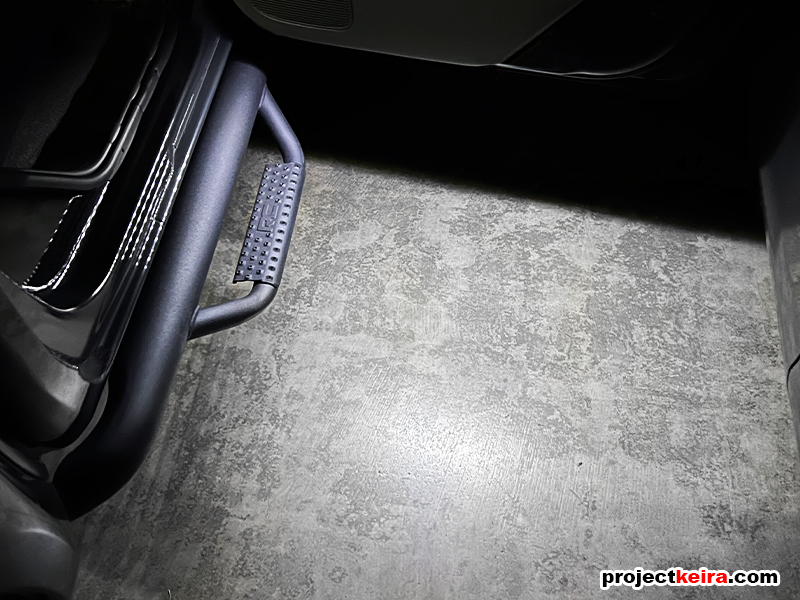Watch Your Step: Custom Rear Door Step Lights
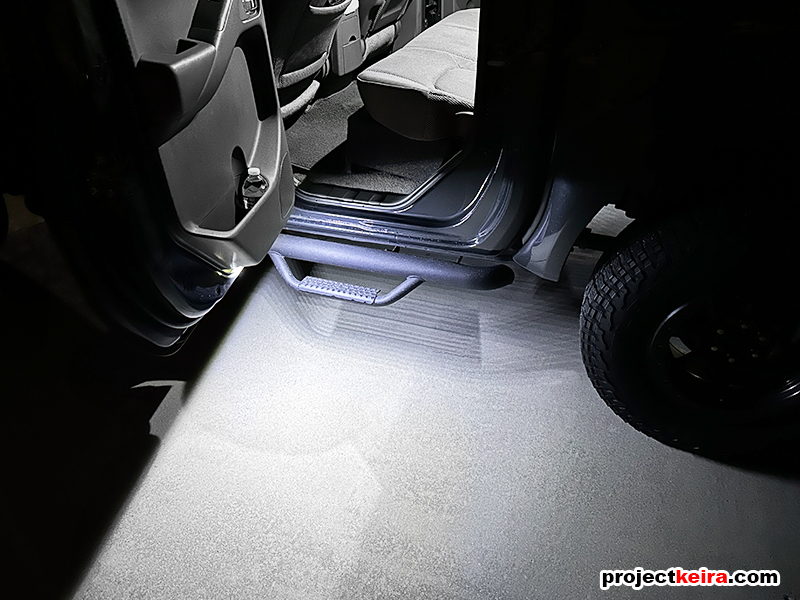
I’m going to be honest here: having a lifted dark gray truck with a gray interior and matte black step rails isn’t too “visually friendly” when it comes to climbing into the back seats at night; this was evident when recently one of my passengers (my mom!) was having difficulty gauging where the step was when entering the truck in the evening. I noticed that even with the rear ceiling light on (and a bright aftermarket LED bulb installed), none of the light reaches down past the edge of the rear kickplate, so the metal step (and everything below it) are in complete darkness. This led me to come up with some way to add “step rail lights” that would illuminate the step area for better visibility/safer entrance and exit.
The simplest way to do it would be to add a light to the bottom of the rear door itself so that the light would not be blocked by anything and it could illuminate the step rail and the ground below. My parts list consisted of just 2 items that luckily, I already had – 4x 1-ft long 12VDC LED light strips that I bought on Amazon a couple of years ago (for my compressor project, but I didn’t use them) and a roll of 18-ga paired wire:
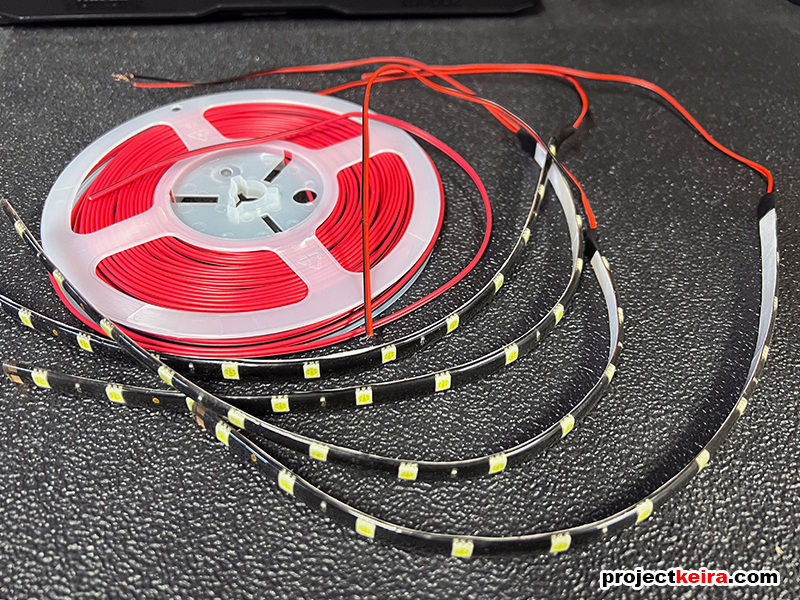
Knowing that I’d have to run a new power wire from the cab to the inside of the rear doors, I took this task on first since it would be the most difficult and annoying part of the installation. To make it less of a hassle, I first popped out the rubber harness boot from the inside of the rear doors and the B-pillar. Then I ran my handy fish tape through the boot, attached the 18-ga power wire, then pulled it through (actually did this to all 4 doors as I initially planned on adding LED lights for the front and rear steps, but later I changed the plan to the rear only):
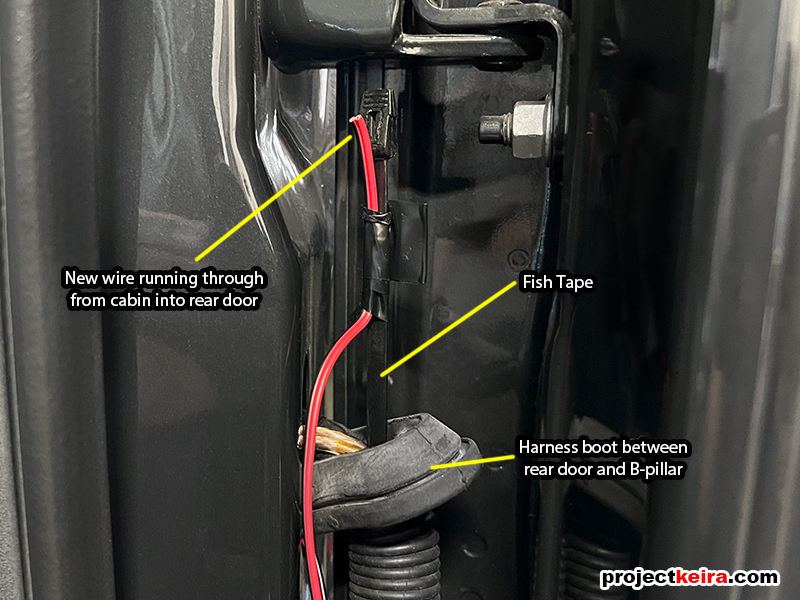
Three bolts were removed next, in order to pop off the rear door interior panel to gain access to the inside of the rear door:
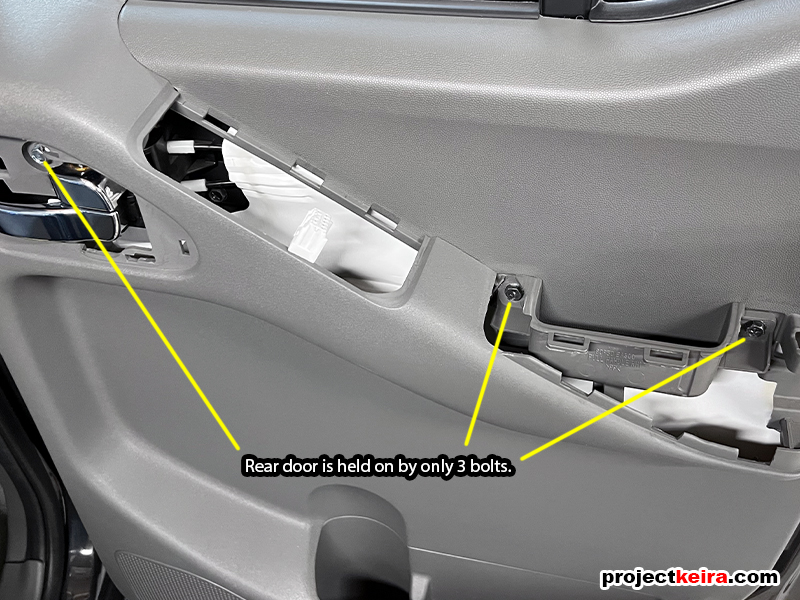
Instead of running the power wire through a random hole within the metal door, I decided that it would work to my favor if I ran the wire out from below the existing plastic rear speaker mounting enclosure. I zip-tied the power wire to the speaker wire and ran the power wire out through a small hole I drilled at the underside of the speaker enclosure:
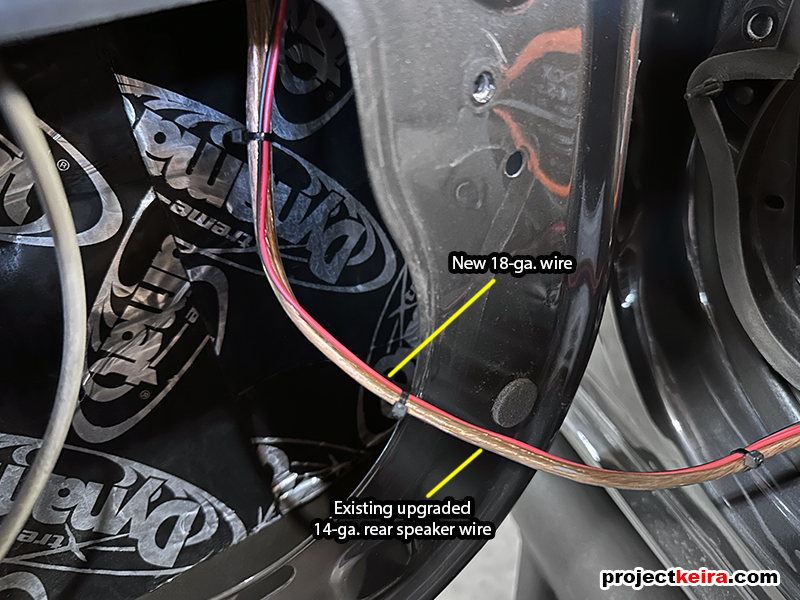

After bolting the enclosure back onto the door, I terminated the power wire with a small 2-pin JST plug, the end result is below:
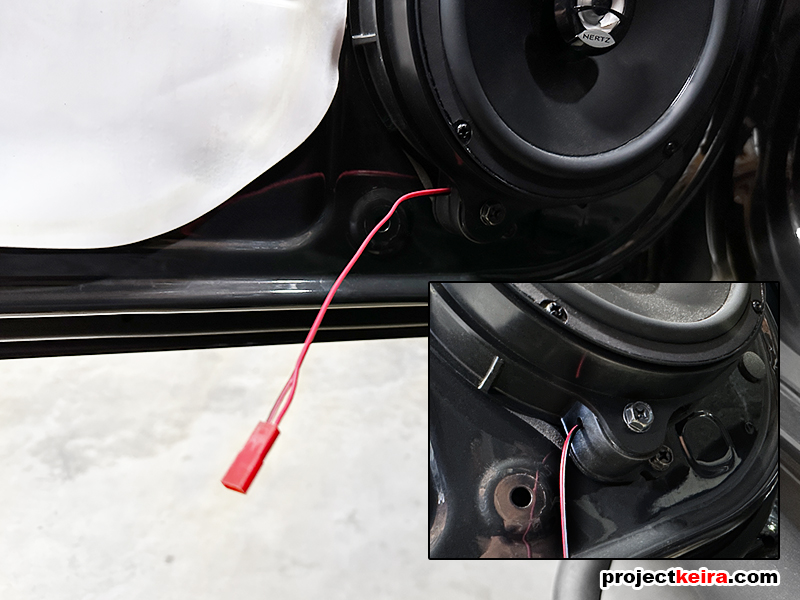
This positioned the power wires perfectly in a spot to connect to the actual LED strips – speaking of LED strips, they also received matching 2-pin JST plugs:
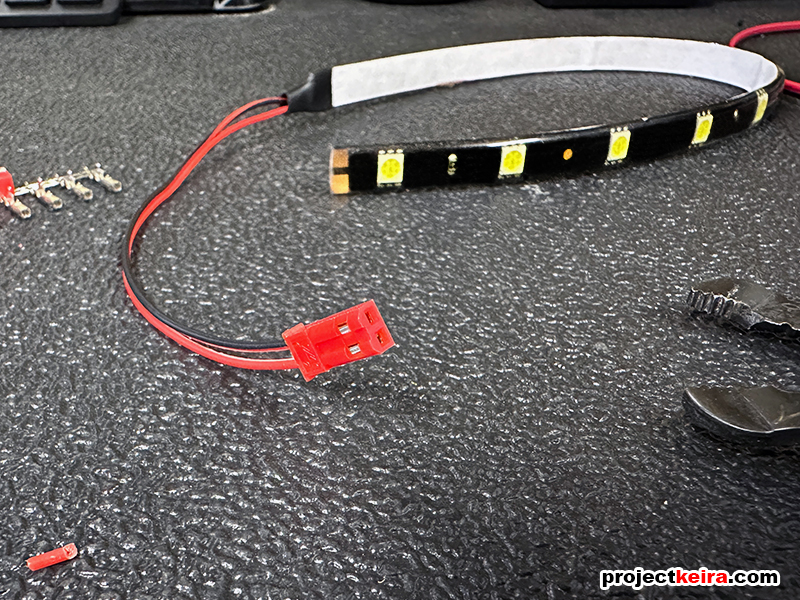
Now it was time to mount the LED strips themselves to the door. I wasn’t too concerned about how it would look since the LED strip would be on the underside of the rear door somewhere, in a non-visible location (unless like, you lay on the ground and looked up). After some test fitting on the metal door area itself, I decided that the best place to put the LED strips would be on the actual interior door panel; this not only gave the LED strips the right orientation (facing downward) but also meant that the LED strips would be on the inside of the door’s weatherstrip so that they would not be exposed to outside elements i.e., rain, car washes, etc. Also, the LED strips were thin enough that they would be clear of catching on anything with the door closing.
To get the right light coverage, the LED strips would have to sit about an inch inboard of the edge of the interior panel. I wanted to eliminate any “loose wiring” so I used my trusty Dremel and carefully trimmed out a tiny hole to allow the wires to run from the LED strip to the inside of the door panel. That way there would be no slack in the LED wiring once installed:
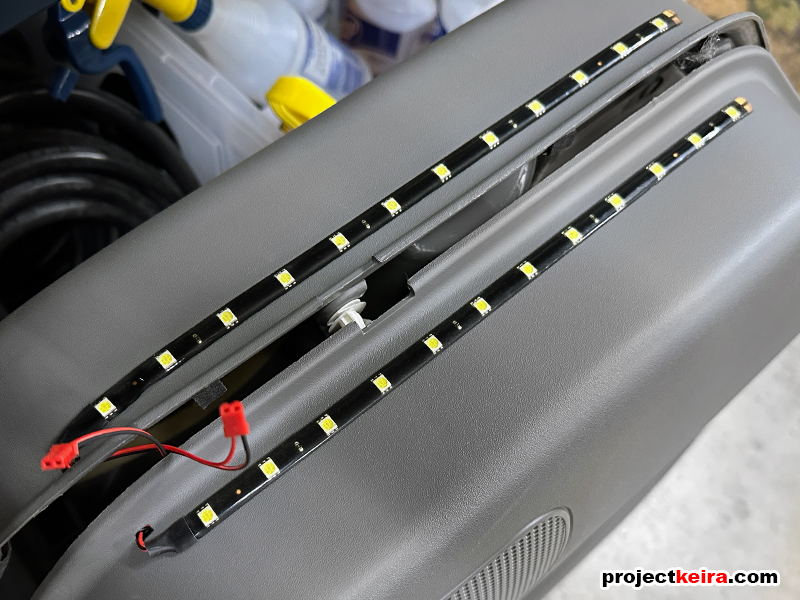
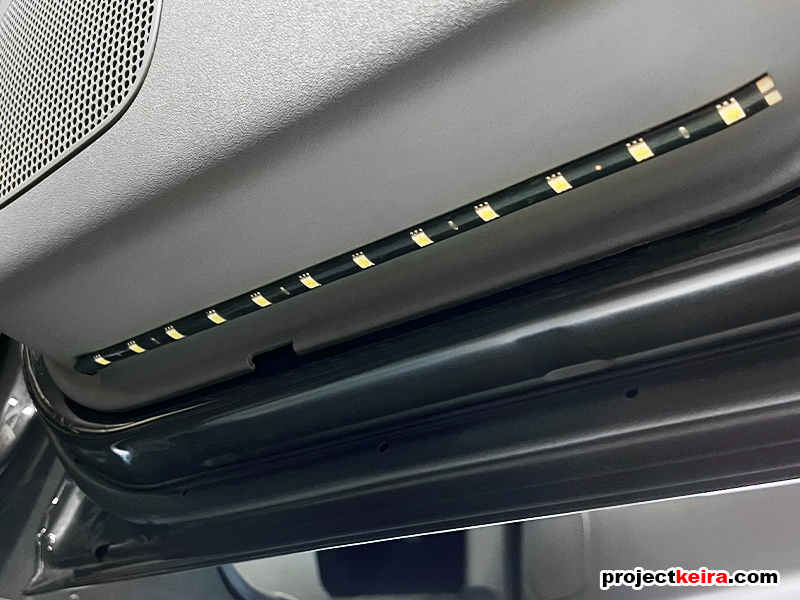
The last step was the power source. I only wanted the LED strips to be on when the door was opened. At first, I was going to devise a way to integrate the existing door pin switches to trigger the LED strips – but then I realized it would be much easier (and less wiring) to get the same effect by wiring the LED strips into the rear ceiling light. With this method,the LED strips would function the same as the rear ceiling light (and be controlled by the ceiling light switch as well). I ran the 18-ga power wire up the C-pillar, and soldered the ends to the interior light contacts for a solid connection:
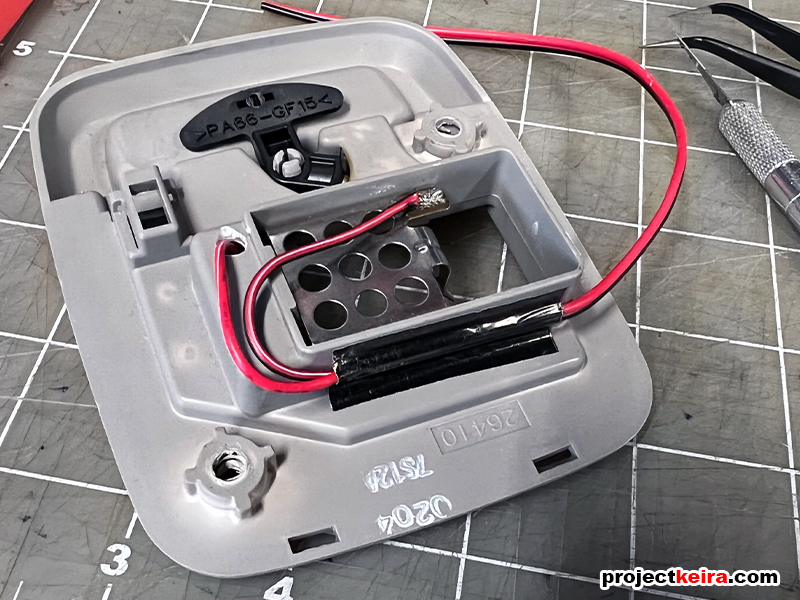
Installation was done! Now the rear doors on both sides had bright LED step lights that illuminated both the step itself and the ground below and around it; here’s the left side with the door open:
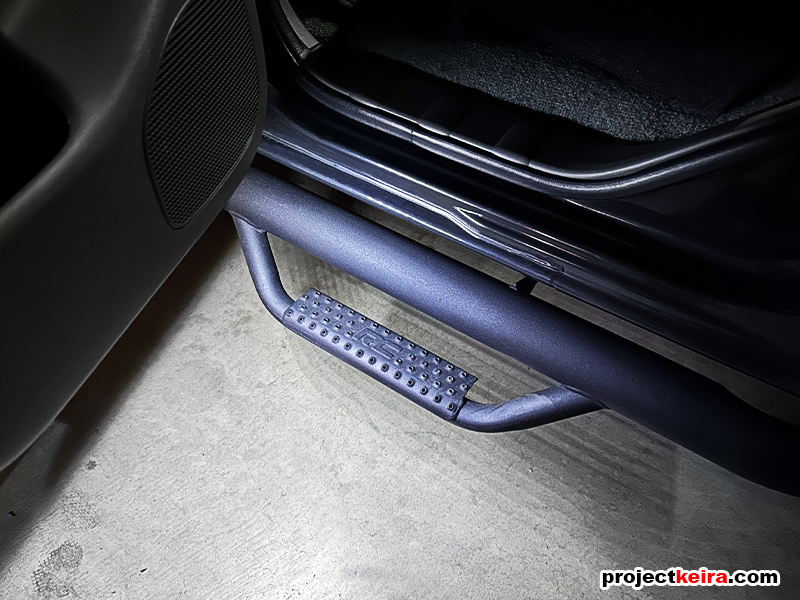
…and here’s the right side as well:
